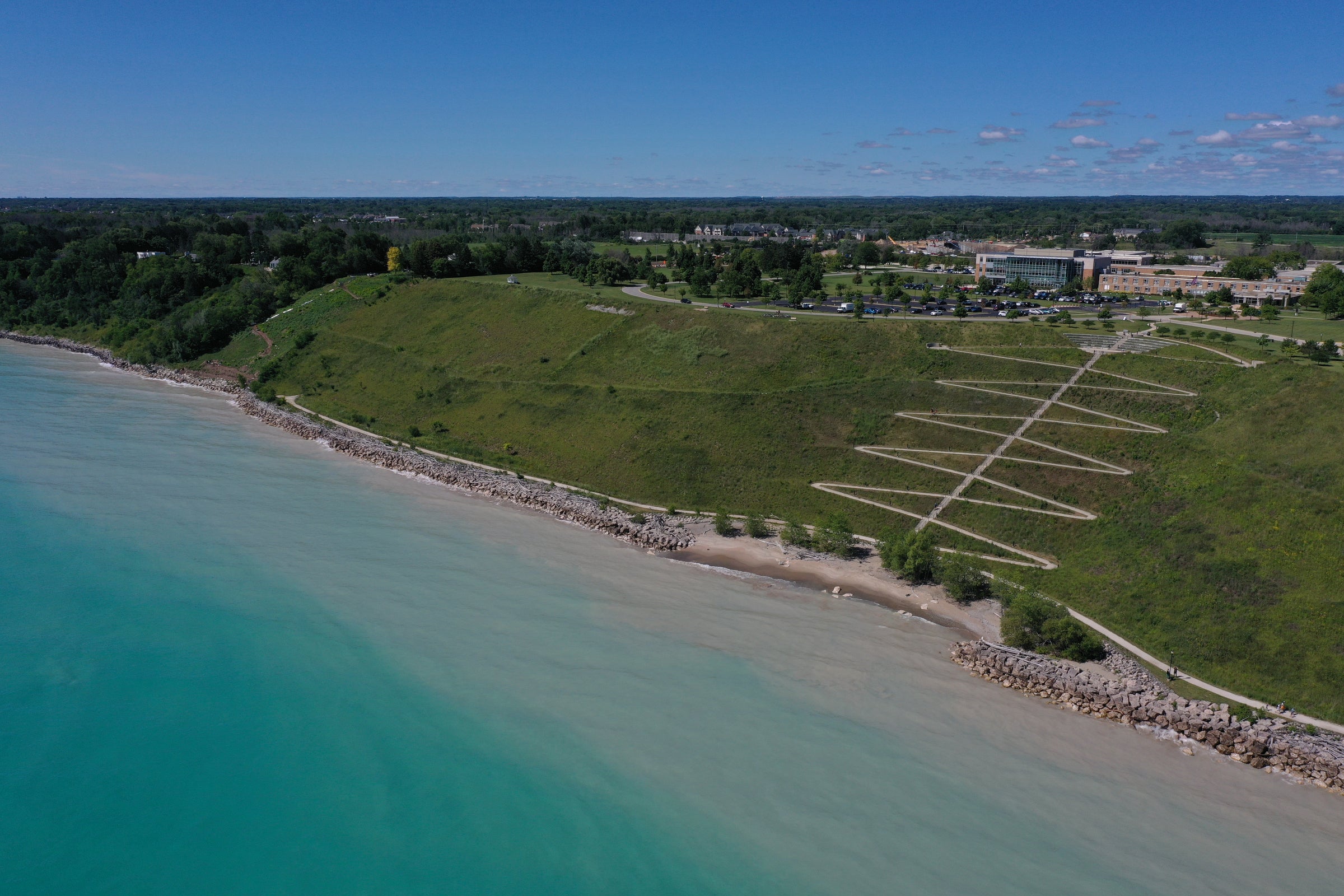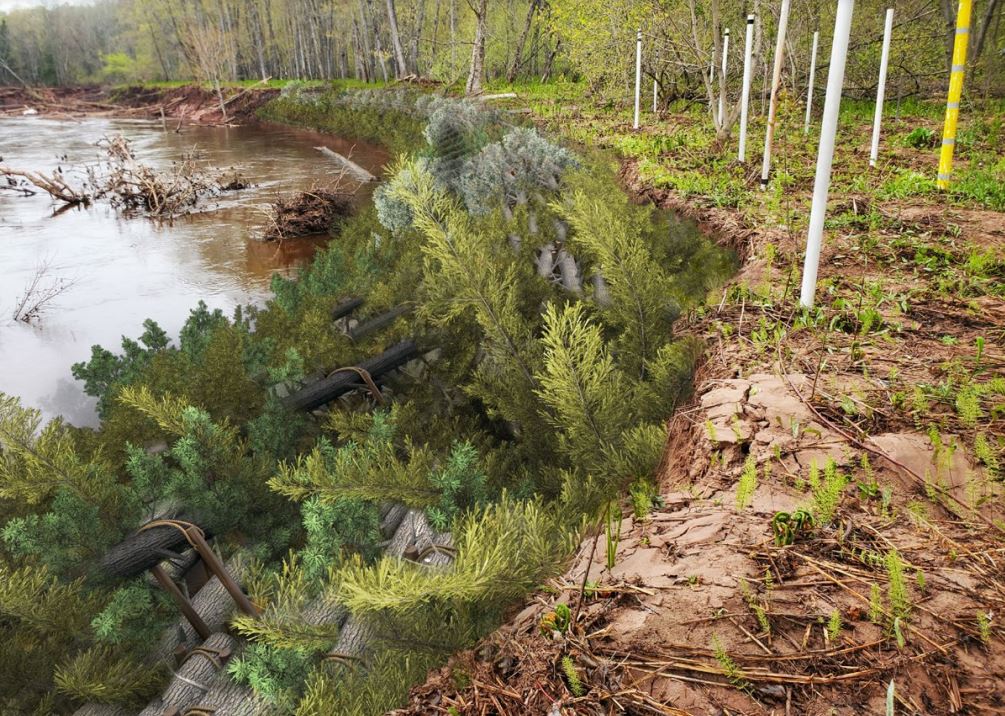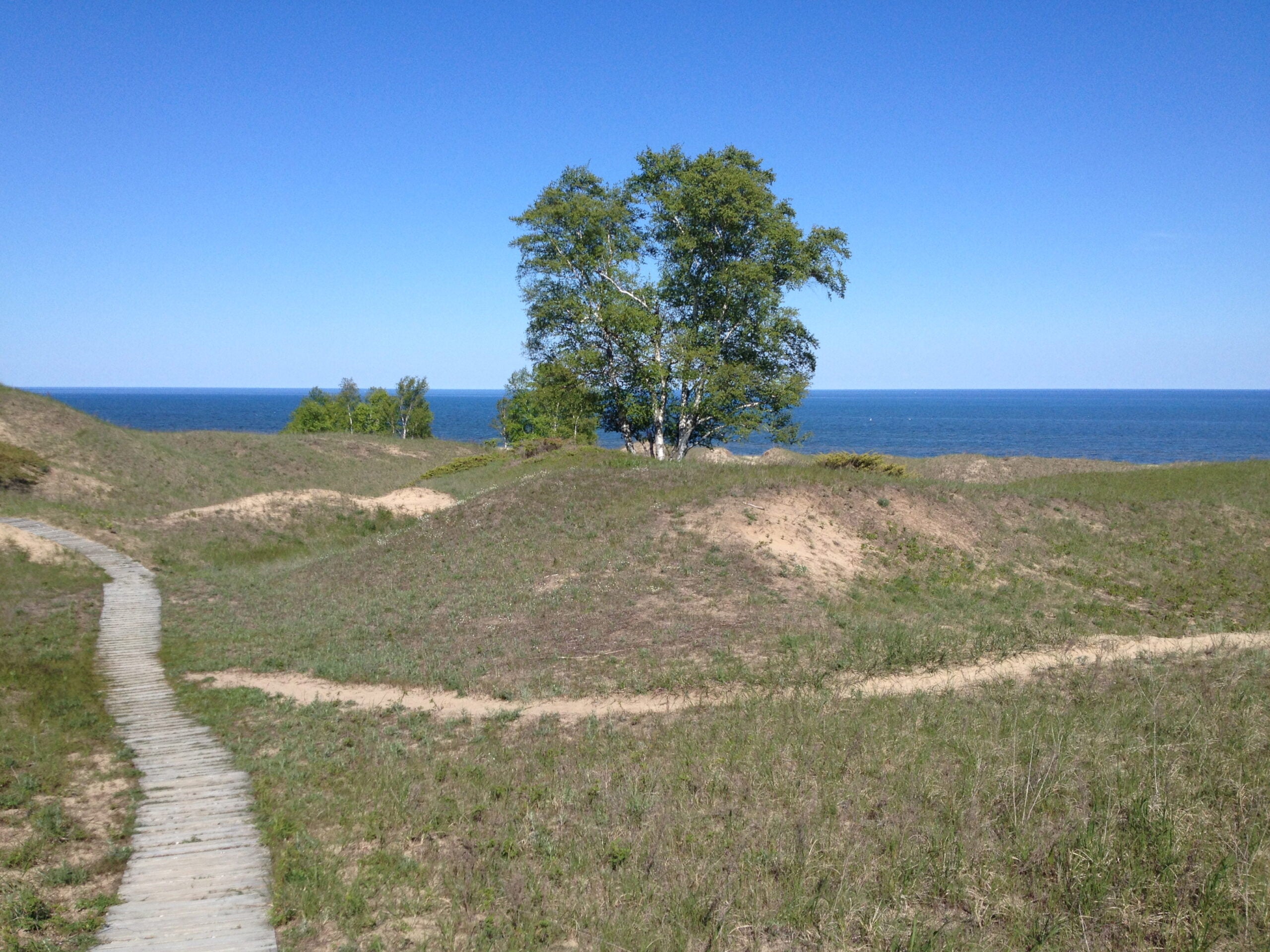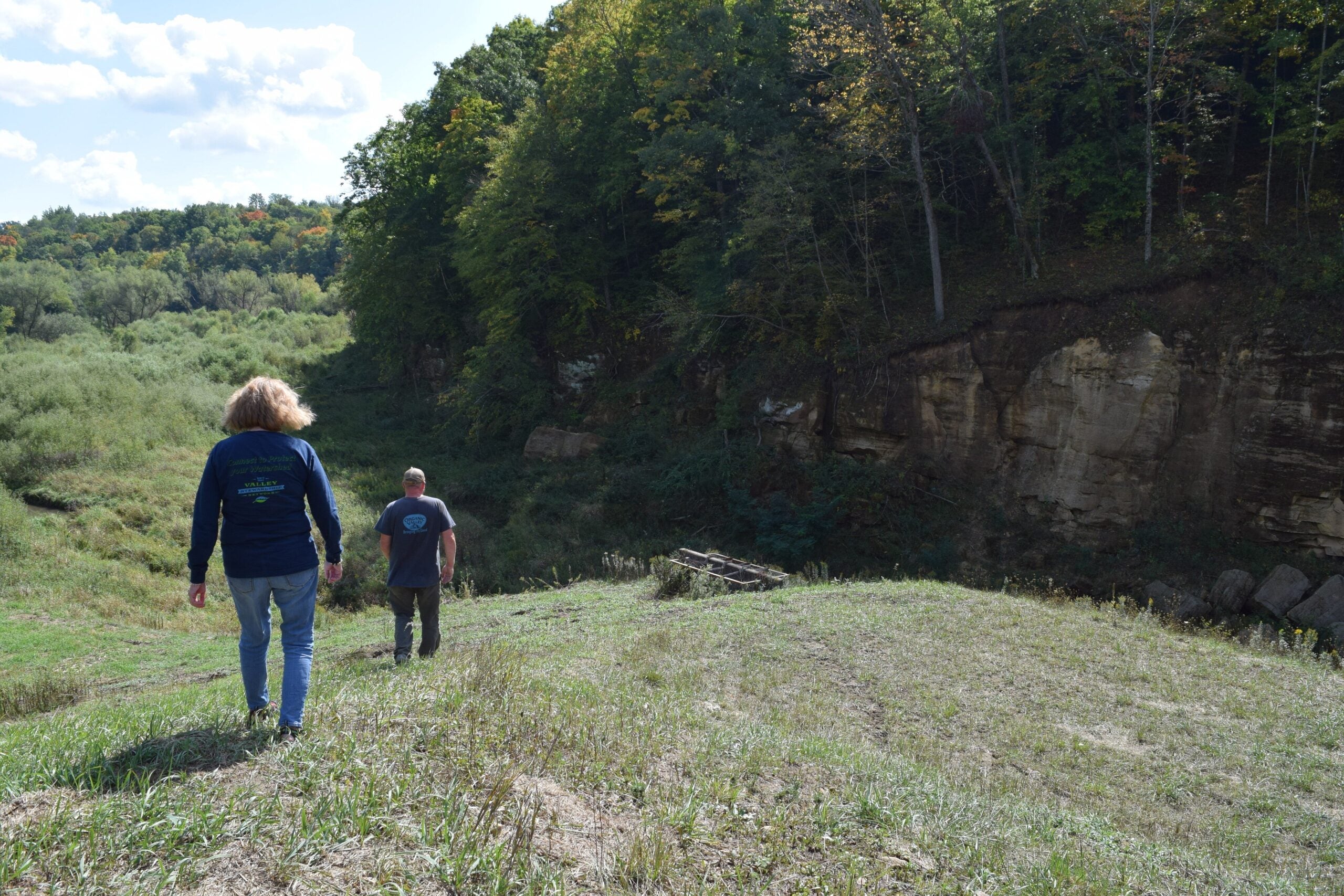Six years ago, David Spector bought an 80-year old house perched on a 120-foot bluff that provided a panoramic view of Lake Michigan’s endless horizon.
But that priceless view may cost Spector more than he could have imagined as ongoing shoreline erosion edges his house ever closer to the bluff’s precipice and crashing waves below.
Spector, who works in real estate, knows it’s only a matter of time until the bluff gives way and his home will be gone.
News with a little more humanity
WPR’s “Wisconsin Today” newsletter keeps you connected to the state you love without feeling overwhelmed. No paywall. No agenda. No corporate filter.
“It’s such a beautiful view. It makes up for some of the heartache,” he said.
The Great Lakes collectively hold 20 percent of the world’s surface fresh water, and Lake Michigan is the second-largest of those lakes by volume.
The Spector property, about 20 miles north of Milwaukee in Mequon, occupies a hotspot for bluff erosion. Wind and waves whittle away at the base of the bluff, knocking soil loose and shaving off portions of Spector’s backyard. Ten years ago, the house stood 50 feet away from the bluff’s edge. Today it’s less than 10 feet away.
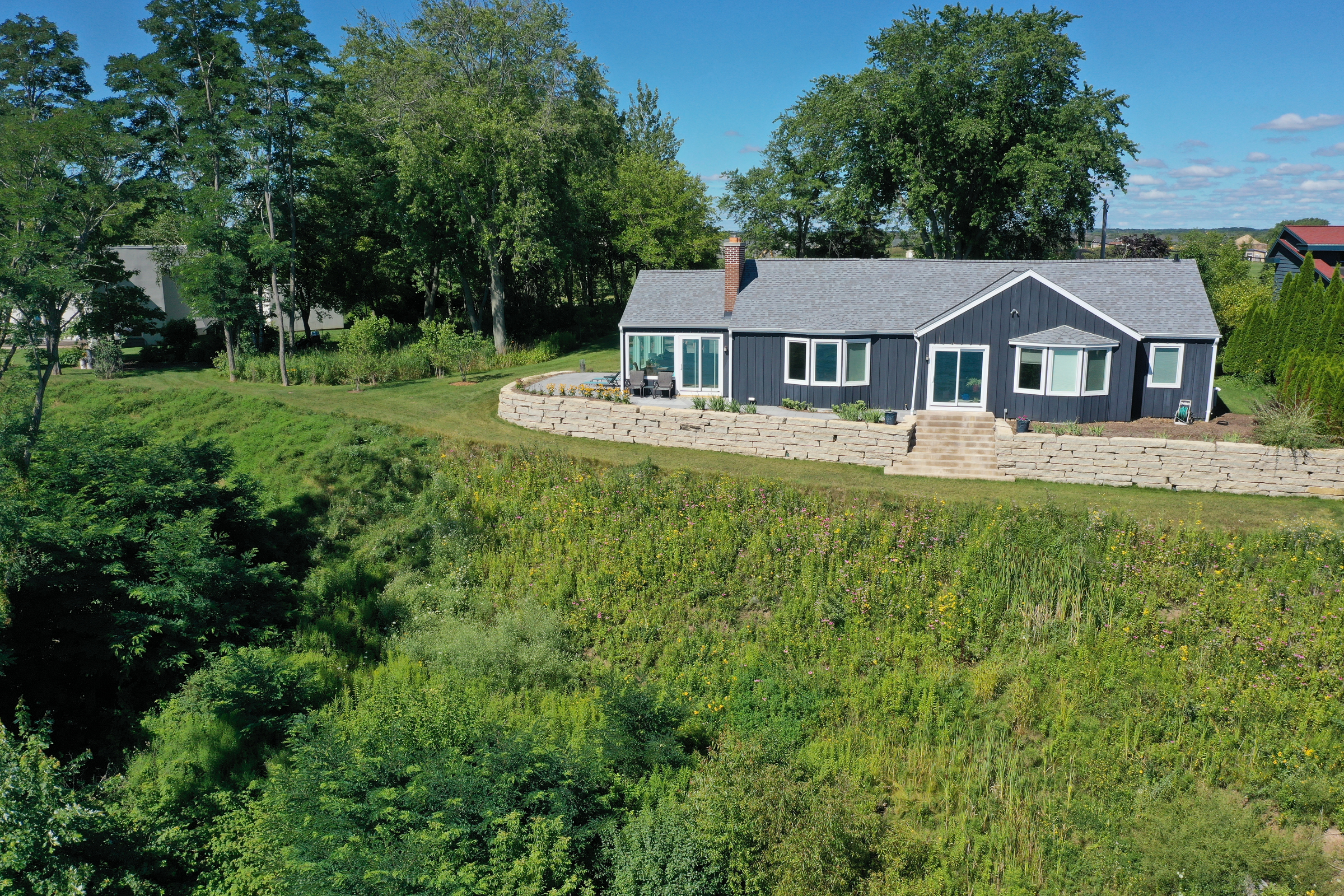
While the elements leave the area particularly prone to erosion, Spector and many of his neighbors say the real problems started after 2007, when Concordia University Wisconsin, a nearby private institution, built a 2,700-foot-long rock wall to protect its own beach and bluff. Experts say the $12 million project is one of the largest seawall structures on Wisconsin’s Lake Michigan shoreline.
But while the wall protected the university, its neighbors almost immediately saw their own beaches begin to wash away. Much of the bluff, once a gentler slope, became a sheer vertical face as yards of their properties tumbled into the lake. Neighbors complained to the university, and two couples sued. Spector’s home was one of the properties at the center of that lawsuit, although the case involved the prior owners, not Spector.
A jury later agreed that Concordia’s construction caused “significant harm” to properties, but the university was not negligent. The jury awarded no damages, leaving bitterness over the seawall to linger in the neighborhood. Concordia did not respond to a request for comment.
Erosion concerns and battles over seawalls span the Great Lakes and the globe, notably in Hawaii, where the islands of Oahu, Maui and Kauai have lost an estimated 25 percent of their sandy beaches with seawall construction fueling the losses. In Australia, the construction of a nearly 25-foot-tall wall to protect properties along the beach sparked intense pushback from community members who argued it would do more harm than good by washing away sand in front of the concrete structure.
Experts worry about the long-term effects of shoreline armoring while describing the practice as a short-term maneuver that benefits those who are fastest to build.
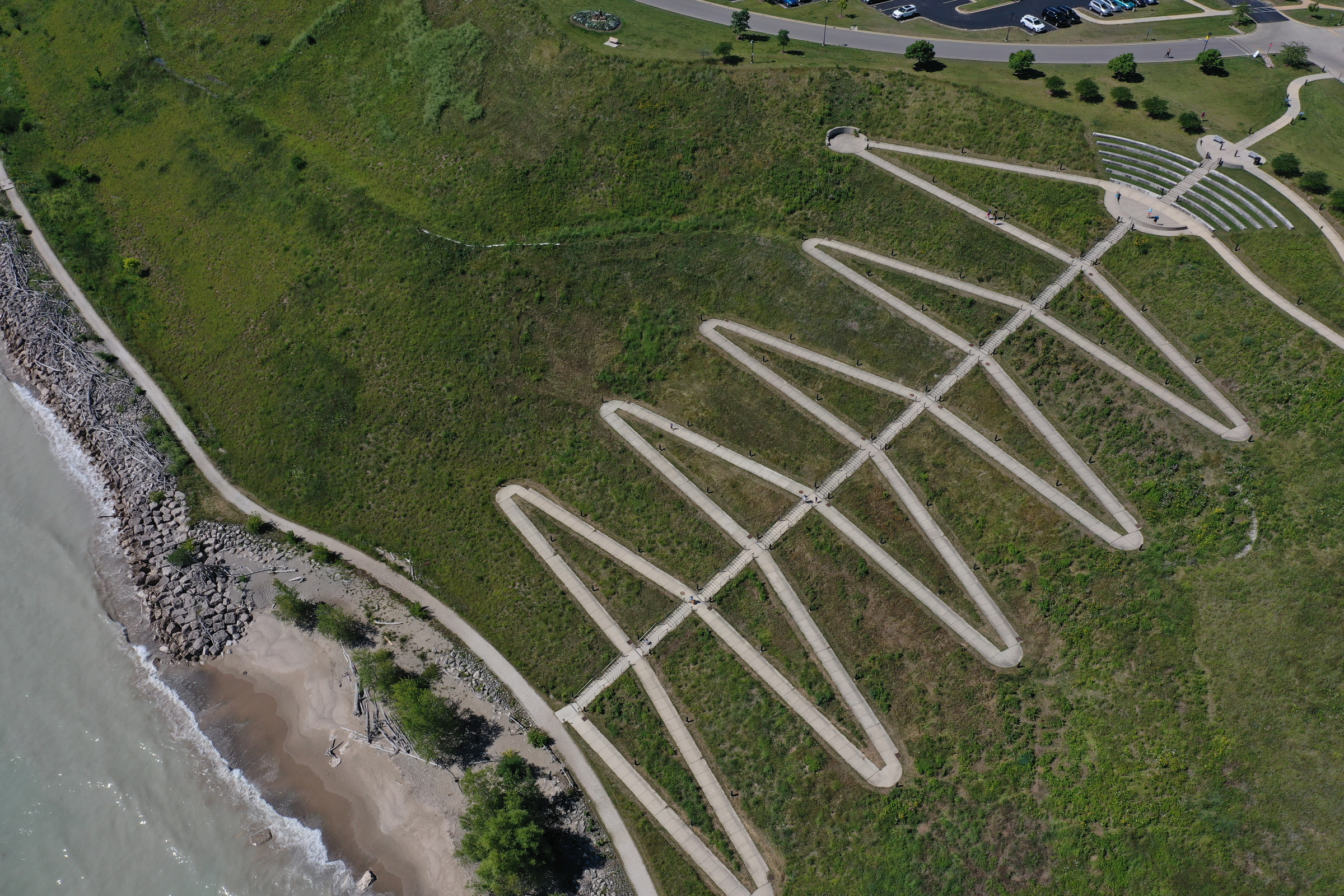
Revetments, a kind of seawall, are typically sloped, stacked rocks meant to buffer the beach against the impact of waves. But they can also affect downstream properties — making adjacent beaches deeper while blocking the natural movement that would otherwise replenish them.
The construction of one wall can kick off a domino effect with consequences for beaches down the shoreline. Damage from one revetment can cause neighbors to armor their shoreline, which can damage the next beach, said Guy Meadows, a professor at Michigan Technological University and director of its Marine Engineering Laboratory.
“That’s what we see happening here near Concordia,” Meadows said. “There’s a cumulative effect.”
Chin Wu, a professor in University of Wisconsin-Madison’s Department of Civil and Environmental Engineering, has studied the issue for years. In 2014, Wu wrote an article published in the Journal of Great Lakes Research that found Concordia’s revetment worsened bluff erosion on the south side of the project, the same direction the current travels.
But new evidence has shown the damage from the revetment is even more widespread than originally known. Not only has the massive wall led to erosion to its south, as first detected, but erosion is also occurring to its north, Wu told the Guardian and Wisconsin Watch.
The rush to armor property is natural, Meadows said. But residents are losing a battle against nature. As waves hit revetments, water reflects backwards, pulling sand farther from the shoreline. Over time, the force scours away at the base of the seawall causing it to fall forward or fail.
Experts like Wu advocate for the use of nature-based solutions — using materials like sand, vegetation or logs to create natural barriers while promoting resiliency of the shoreline.
But many property owners still opt for the quick-fix of seawall construction, a tactic Meadows and others describe as a band-aid solution with unintended consequences.
“Once we start building structures on the shoreline, armoring the shoreline, (creating) harbor structures, we change the shoreline dynamic,” Meadows said. “There’s many, many places where there is no beach anymore. So going to the extreme, if these trends continue, there will be no beach or access for the general public.”
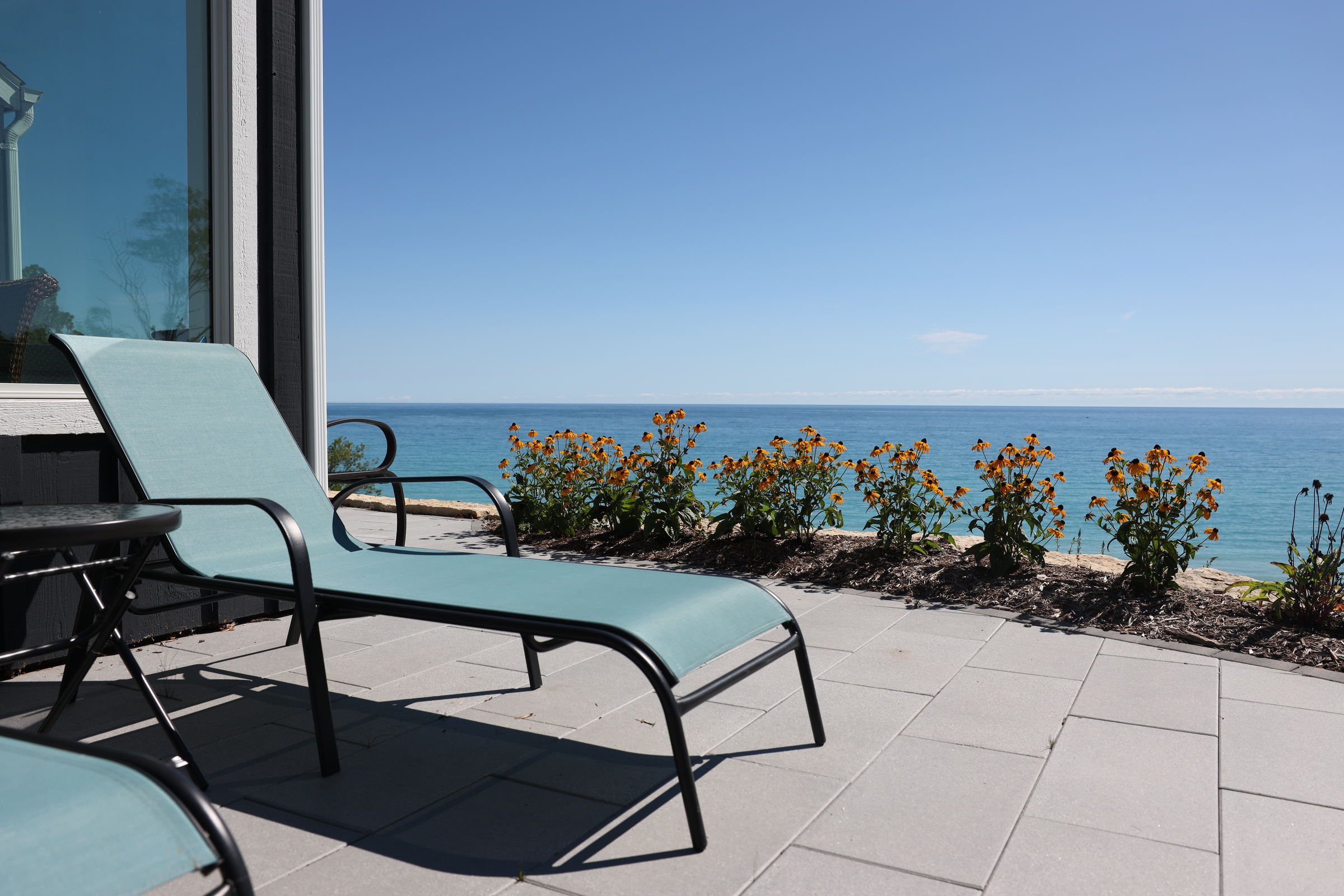
Dramatic shifts in water levels
Looking out from its shoreline, with no land in sight, Lake Michigan’s waters resemble more of an ocean than a lake.
Unlike the oceans, however, which are rising gradually with global temperatures, water levels on Lake Michigan’s water levels largely depend on weather and swing up and down in three- to 10-year cycles.
But climate change appears to be altering patterns in the region, bringing warmer temperatures that speed evaporation and more frequent, intense storms that dump more water into the lake. As a result, lake levels over the past 10 years have swung from low to high at a startling pace.
Between record lows in 2013 and a record high in 2020, lake Michigan rose by 6 feet, according to data from the U.S. Army Corps of Engineers. Water levels have since dropped, but still remain above their monthly, long-term average.
Contractors, ferry boat captains, climate scientists and home owners are living through the most dramatic shifts in their lifetimes.
The Great Lakes are new features geologically speaking, said Meadows, carved out several thousand years ago by retreating glaciers. Especially in the case of Lake Michigan, that retreat left a deep basin with steep sides, which is broadening through natural erosion by about a foot per year. But during years of high water, waves pack more energy, dramatically accelerating erosion, Meadows said.
“When we go through episodes of extremely high water levels, like we just went through in 2020 for Lake Michigan, that erosion rate goes up catastrophically, from one foot per year to 10, 20 or 30 feet per year, depending on where you are on the shoreline,” Meadows told Wisconsin Watch last year.
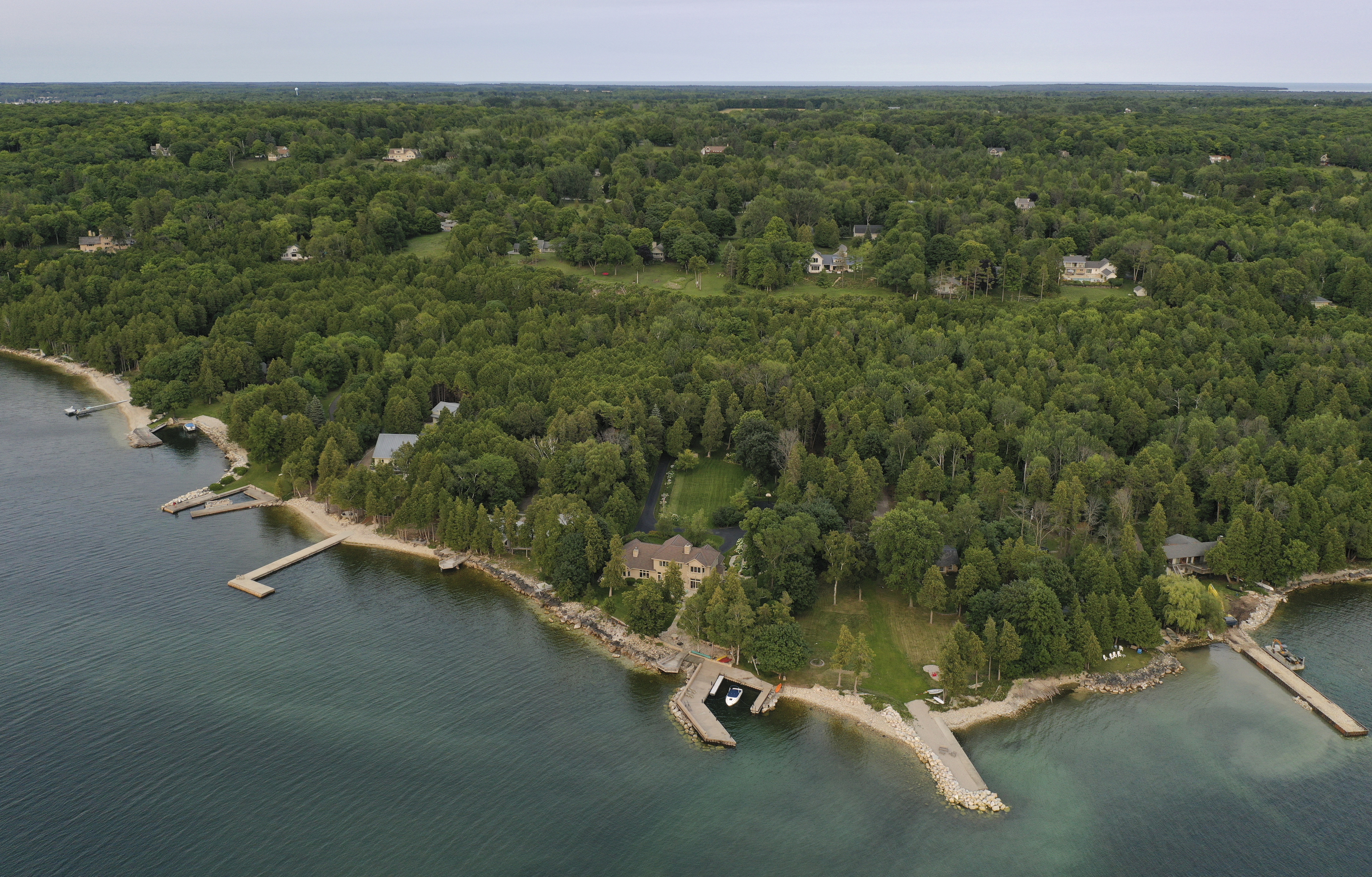
As Lake Michigan’s waters climbed between 2018 and 2020, the number of property owners in Wisconsin applying to build revetments along their properties more than doubled. Those requesting emergency certifications — a temporary permit that allows walls to stand until the state can inspect them — soared from fewer than 30 applications to 280, an 830 percent increase.
And those figures offer only a partial glimpse of Lake Michigan shoreline. The Wisconsin Department of Natural Resources issued most permits in Door County — a sensitive habitat in northeastern Wisconsin where permits are required. Property owners farther south are not required to seek permits for new barriers, so long as they meet DNR’s standards.
Some residents along Door County’s shoreline watched neighbors, one by one, hustle to build revetments during 2020’s high waters. Similar trends played out elsewhere on the lake, as panicked property owners in communities north of Chicago rushed to do the same.
In Wisconsin, many of those who installed new revetments under emergency certification may have to revisit the work. The DNR recently sent letters to 115 Door County property owners whose seawalls failed to meet agency standards upon inspection, according to James Pardee, DNR environmental analysis and review specialist.
DNR spokesperson Sarah Hoye said Concordia obtained a permit for its project in 2005. The DNR hasn’t identified any enforcement issues with the project, she said, but hasn’t done any follow up monitoring on the revetment since its construction.
Stabilizing a bluff
For the next few years, Spector does not expect his house to topple over the bluff’s edge. The same can’t be said for all his neighbors.
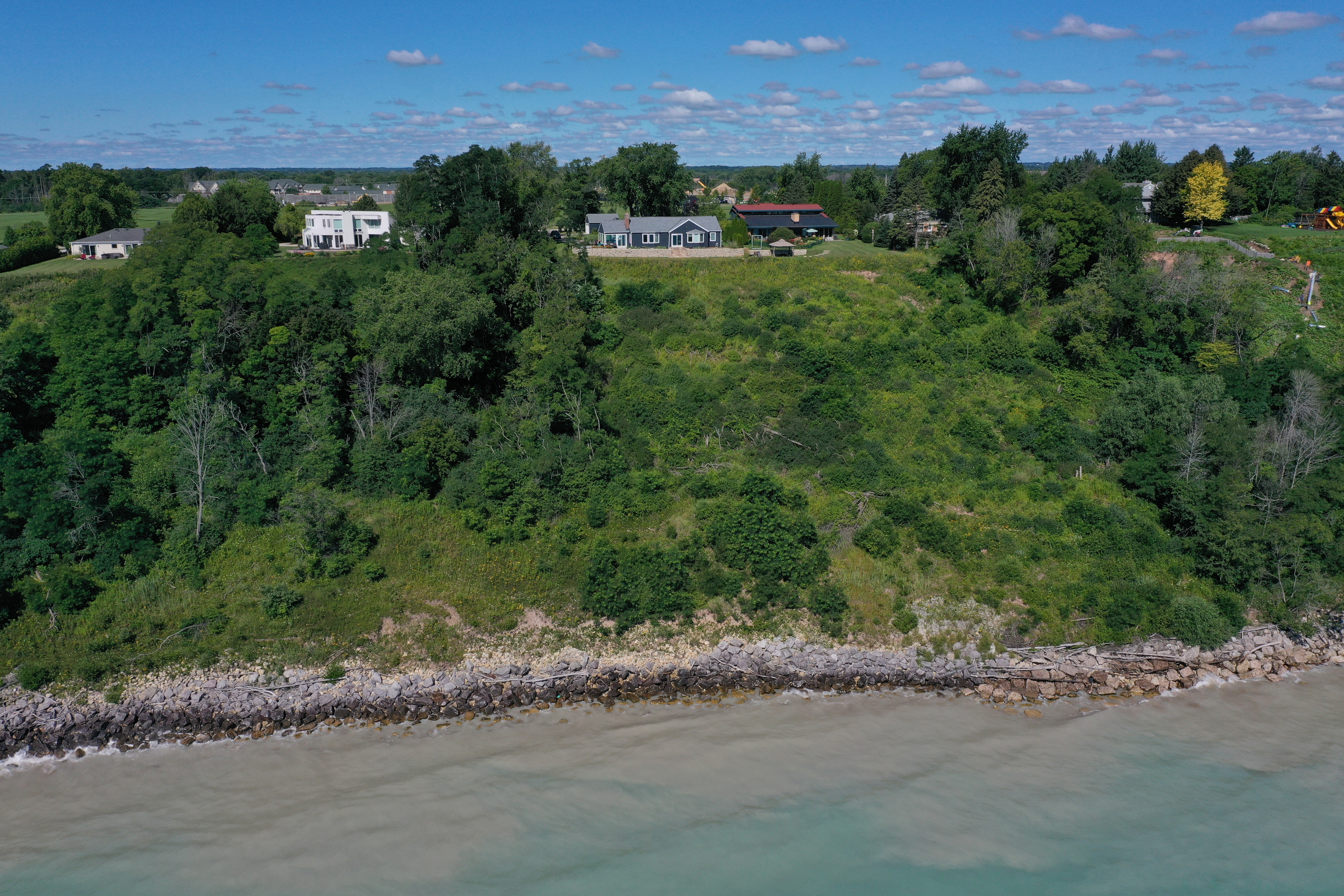
Spector’s property is several doors south of Concordia’s seawall. But properties north of the revetment are now seeing pronounced erosion. Wu said it’s hard to attribute all the damage done to properties north of Concordia to its seawall alone; recent years’ high water and heavy rains have also accelerated erosion.
But in 2020, a three-bedroom house overlooking the lake in Grafton was left on the brink of collapse after heavy rains pummeled the area. At one point, the house’s worth was estimated at nearly $1 million. The house has since been demolished. Now, a bare patch of concrete sits where it once stood.
At another nearby property, a children’s swing set teetered on the edge of the bluff, its front legs clinging to soil that hasn’t yet tumbled into the lake.
Spector said he believes there’s a misperception that everyone in the area is extremely wealthy. But there are many modest homes and retired residents along the lakeshore — people who can’t afford to make major repairs.
He said he bought his house for around the cost of the land, knowing work needed to be done.
The previous owners installed a $60,000 revetment to protect that bluff. To extend the house’s lifespan, Spector reinforced its basement and built a $25,000 retaining wall to keep the home in place. He and neighbors hired a contractor to cut a slope into his remaining yard, which can help stabilize the bluff. And they planted deep-rooted vegetation, which can help hold soil.
“For me, it made sense to buy the house and put some work into it knowing I might only have it for 10 to 15 years,” he said. “But I think some people who are moving into these million-dollar homes without any kind of protection might be living in denial.”
Spector is optimistic the work he has done to protect his property will keep the house upright for years to come.
“I’d like to say it’s a success story, but it may be only a temporary success story,” he said.
tanka dhakal contributed reporting. A version of this story was first published by the Guardian, which commissioned it. The nonprofit Wisconsin Watch (www.WisconsinWatch.org) collaborates with WPR, PBS Wisconsin, other news media and the University of Wisconsin-Madison School of Journalism and Mass Communication. All works created, published, posted or disseminated by Wisconsin Watch do not necessarily reflect the views or opinions of UW-Madison or any of its affiliates.
